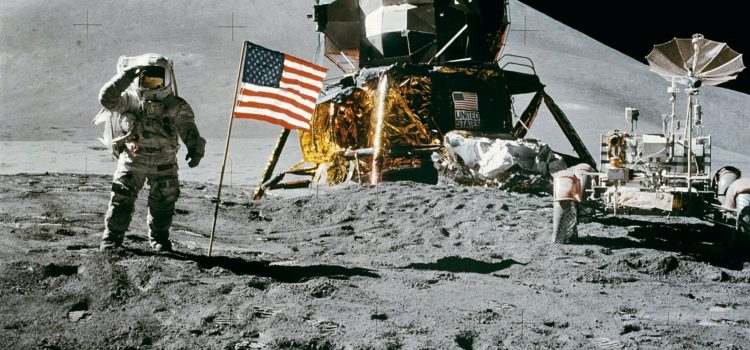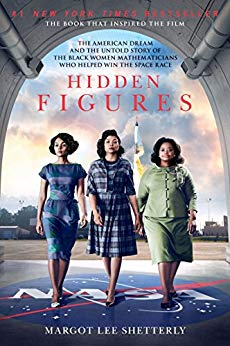

This article is an excerpt from the Shortform summary of "Hidden Figures" by Margot Lee Shetterly. Shortform has the world's best summaries of books you should be reading.
Like this article? Sign up for a free trial here .
What were the main NASA Cold War activities, and what happened at NASA during the Cold War? Why was space travel so important?
NASA during the Cold War focused relentlessly on getting to the moon. NASA Cold War activities, particularly following the Soviet launch of Sputnik, revolved around tirelessly trying to make scientific discoveries and proving American excellence. See how NASA Cold War history defined the US for generations.
A New Direction for NASA During the Cold War
After the Allied victory in the war, Hampton Roads became a focal point of the US defense industry during the Cold War with the Soviet Union. This meant that most of the West Computers who had initially come to Langley on temporary assignment ended up receiving permanent offers of employment, as Dorothy did in 1946. The NASA Cold War direction meant a focus on defense, and later, space travel.
For NASA, the Cold War also marked a turning point in the struggle for black civil rights, contributing to the eventual breakdown of Jim Crow. As the United States sought international allies in its fight against worldwide Soviet Communism, American policymakers began to realize that segregation at home had become a significant liability, one that made America’s self-proclaimed leadership of “the free world” look hypocritical and handed a significant propaganda coup to the Soviet Union. The federal government began putting more resources toward desegregation and slowly started to side with the civil rights protesters over the die-hard segregationists.
While much of the nation did, in fact, witness a downscaling of the defense industry, this was not the case in Hampton Roads. As the Cold War with the Soviet Union began to take shape following World War Two, Southern Virginia was set to become a critical hub of the nation’s defense industry. The Norfolk Naval Base became the command center of the Atlantic Fleet, while the US Army designated Langley Field as the headquarters of its Tactical Air Command (later to become an independent branch of the military: The United States Air Force).
Thus, although some women who had been hired during the war did end up leaving Langley, this was usually due to personal choice rather than being forced out of their positions. Most of the West Computers ended up receiving permanent offers of employment, as Dorothy did in 1946, when she was made a permanent Civil Service employee.
The new strategic importance of the region meant that the boom economy would continue. With new bases, there would be new needs for military contractors to supply them. Defense industry money poured into Hampton Roads, bringing new jobs, new migrants, and new transformations. During the Korean War (1950-1953) alone, NACA presented a proposal to Congress to double its staff from 7,000 to 14,000. The NASA Cold War strategy meant more opportunities for people like Katherine Johnson.
Sputnik and NASA Cold War Space Race
On October 5, 1957, the Soviet Union successfully launched the Sputnik satellite into orbit, inaugurating the space race era of the Cold War and sparking a major panic among both American policymakers and the general public. All across the US, people with shortwave radios tuned in to hear the tiny satellite’s telltale “beep beep” and organized observation parties to watch Sputnik as it traveled through space. The NASA Cold War ramp-up had yet to produce such results.
It was a deeply humbling moment for the West: the Russians had beaten the Americans into space. Had American technology fallen behind that of the Soviets? And if so, what did that mean for the future security of the self-styled “free world?” Many feared that the Soviet Union’s ability to launch the satellite proved that they must be in possession of a vast arsenal of intercontinental ballistic missiles capable of raining destruction down upon American cities. The NASA Cold War tactics would now focus relentlessly on getting to space, and proving American excellence.
The man whom Katherine and her group would be launching into orbit was a name that would become known to history—John Glenn. The logistical hurdles of launching and returning a satellite were complicated enough. Doing so with a human being inside made it vastly more challenging. The extreme temperatures and radiation could be extremely dangerous for Glenn. Moreover, the NASA leadership knew that his death during the mission would be a public relations nightmare for the agency and for the United States as it sought to gain the upper hand in the Cold War.
NASA Cold War activities were heavily focused on getting to the moon, but that’s not all they did. With the help of brilliant mathematicians and scientists like Katherine Johnson, NASA during the Cold War made scientific discoveries that forever change the landscape of science and math.

———End of Preview———
Like what you just read? Read the rest of the world's best summary of Margot Lee Shetterly's "Hidden Figures" at Shortform .
Here's what you'll find in our full Hidden Figures summary :
- How brave black women were instrumental to the American space race
- How they confronted racism and sexism to forge a better future
- Their enduring legacy in American history






